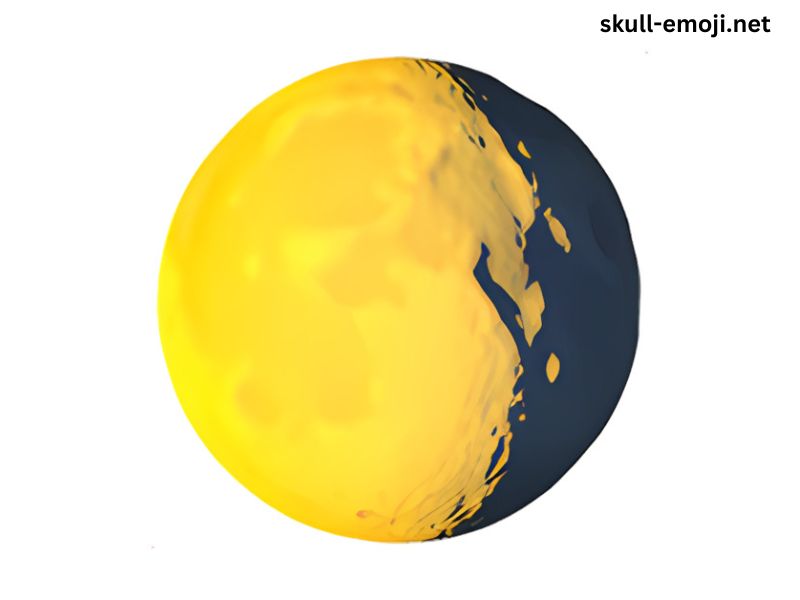The moon has captivated human beings for centuries, inspiring art, literature, and science. Today, we often rely on emojis to express thoughts and feelings in a playful way, and the moon phases have found their place in this digital lexicon. But what do these moon phase emojis really mean, and how can we use them to enhance our understanding of lunar cycles? In this article, we’ll explore the current phase of the moon, how it can be represented as an emoji, and what significance it holds in various cultures and practices.
The Lunar Cycle: An Overview
The moon goes through a continuous cycle of phases, typically lasting about 29.5 days. This cycle begins with the New Moon, where the moon is not visible from Earth, and progresses through various phases until it reaches the Full Moon, where it shines brightly in the night sky. The major phases of the moon are:
- New Moon (🌑): The moon is completely dark and invisible.
- Waxing Crescent (🌒): A small sliver of light appears as the moon starts to grow.
- First Quarter (🌓): Half of the moon is illuminated.
- Waxing Gibbous (🌔): More than half of the moon is lit, but it is not yet full.
- Full Moon (🌕): The moon is fully illuminated and often seen as a round, bright orb.
- Waning Gibbous (🌖): The light begins to decrease, but more than half is still visible.
- Last Quarter (🌗): Again, half of the moon is illuminated, but it is the opposite half from the First Quarter.
- Waning Crescent (🌘): A small sliver of light remains as the moon prepares to become New again.
The Current Phase of the Moon
As of today, let’s say the current phase of the moon is a Waxing Gibbous (🌔). This phase occurs between the First Quarter and Full Moon. During this time, the illuminated portion of the moon is growing, moving towards fullness. The Waxing Gibbous phase is often seen as a time of potential and abundance.
What Does Waxing Gibbous (🌔) Mean?
- Symbolism: The Waxing Gibbous represents growth, expansion, and the buildup of energy. It’s a period where projects and intentions started during the New Moon phase begin to show results. The light of the moon grows stronger, symbolizing clarity and focus.
- Astrological Significance: In astrology, the Waxing Gibbous is often linked with optimism and success. It’s considered a favorable time for manifesting desires and taking action. The energies during this phase can enhance creativity and motivation, making it ideal for working towards goals.
- Cultural Interpretations: Different cultures have unique interpretations of the Waxing Gibbous. In some traditions, it’s seen as a time for preparation, where individuals gather resources and plan for upcoming endeavors.
How to Use Moon Phase Emojis in Daily Life
Emojis are a fun and expressive way to communicate, and incorporating moon phase emojis into your daily conversations can add depth and creativity. Here are a few ways to use them:
- Daily Check-ins: Use the current moon phase emoji in your messages to friends or on social media to indicate your mood. For example, if you’re feeling reflective during a New Moon (🌑), share that emoji and let people know you’re in a period of contemplation.
- Goal Setting: Align your personal or professional goals with the moon phases. For instance, during a Waxing Gibbous (🌔), you might share your aspirations or progress on a project, encouraging others to do the same.
- Creative Expression: If you’re an artist or writer, use the moon phase emojis as inspiration. Create a piece that embodies the energy of the current phase, using the emoji to signify your theme or concept.
- Mindfulness Practices: Incorporate moon phases into your mindfulness or spiritual practices. For example, during a Full Moon (🌕), you might focus on gratitude, while a New Moon (🌑) could be a time for setting intentions.
The Science Behind the Moon Phases
While moon phase emojis add a fun twist to our digital communication, the science of how the moon’s phases occur is fascinating. The appearance of the moon from Earth depends on its position relative to the Earth and the Sun. Here’s a brief breakdown:
- New Moon: The moon is between the Earth and the Sun, making it invisible from our viewpoint.
- Waxing Phases: As the moon moves in its orbit, more of its surface is illuminated by the Sun, leading to the Waxing Crescent and Waxing Gibbous phases.
- Full Moon: The Earth is between the moon and the Sun, allowing us to see the entire illuminated surface.
- Waning Phases: After the Full Moon, the moon begins to move back towards the New Moon, leading to the Waning Gibbous, Last Quarter, and Waning Crescent phases.
The Cultural Impact of the Moon
Throughout history, the moon has played a significant role in human culture. Here are some examples:
- Calendars: Many cultures have used lunar calendars to track time, agricultural cycles, and festivals. The Islamic calendar, for example, is based on the lunar cycle.
- Folklore and Mythology: The moon has been featured in countless myths and stories. In various cultures, it is personified as a deity or associated with feminine energy and intuition.
- Art and Literature: Artists and writers have often turned to the moon for inspiration. From Van Gogh’s “Starry Night” to Shakespeare’s poetry, the moon has served as a powerful symbol of beauty, mystery, and longing.
Modern Interpretations and Practices
In contemporary society, the moon continues to hold significance, particularly in spiritual and wellness practices. Many people follow lunar cycles for personal development, gardening, and rituals.
- Lunar Gardening: Some gardeners believe that planting according to the moon phases can enhance plant growth. For example, planting during the Waxing Moon is thought to promote growth, while the Waning Moon is a good time for harvesting.
- Astrological Rituals: Many individuals use the moon phases for astrological readings, manifesting desires, or releasing what no longer serves them. This has led to a resurgence of interest in astrology and lunar rituals in modern wellness communities.
- Mindfulness and Reflection: As awareness of the moon’s cycles grows, more people are using them as a framework for mindfulness and reflection. Journaling during specific phases can help individuals connect with their emotions and intentions.
Conclusion
The current phase of the moon, represented by the Waxing Gibbous emoji (🌔), offers more than just a visual representation; it symbolizes a period of growth, creativity, and potential. Whether you’re using moon phase emojis to express your feelings, aligning your goals with lunar cycles, or exploring the cultural and scientific significance of the moon, there’s no denying its enduring influence on our lives.
As we look up at the night sky and observe the phases of the moon, we are reminded of the cyclical nature of life and the possibilities that come with each new phase. So the next time you see a moon emoji, take a moment to reflect on its meaning and how it resonates with your own journey. 🌕✨



